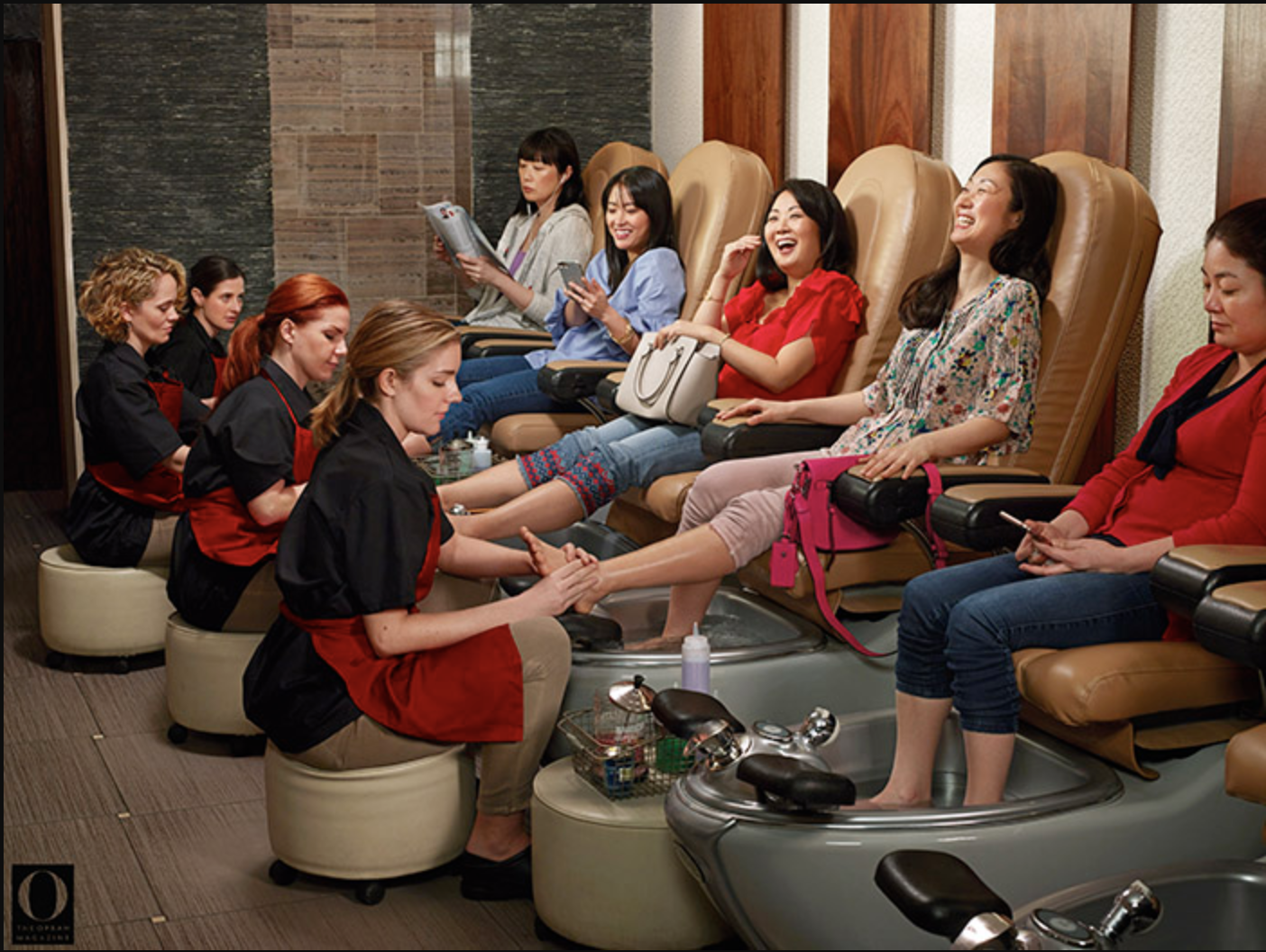Um ensaio fotográfico está fazendo as pessoas refletirem a maneira como lidam com questões relacionadas ao racismo e aos estereótipos raciais.
As fotos, publicadas pela primeira vez na "O, The Oprah Magazine" (publicação criada pela apresentadora de TV e empresária Oprah Winfrey), invertem as expectativas raciais em situações cotidianas, como uma menininha branca de frente para uma estante de brinquedos repleta de bonequinhas negras. Os cenários tratam das complexidades que as mulheres experimentam todos os dias ao lidar com o racismo.

"As imagens não pretendem apontar culpados, mas sim incentivar as pessoas a questionar e debater sobre suas próprias concepções em relação a assuntos raciais", afirma Chris Buck, fotógrafo autor da série, para a Global Citizen.
De acordo com Lucy Kaylin, editora-chefe da publicação, a ideia surgiu de uma conversa entre a equipe criativa da revista "O" e a própria Oprah Winfrey.
“O tema nasceu em uma reunião que tivemos com a Oprah em sua casa. A pauta já era um desejo compartilhado pela equipe e ela nos incentivou fortemente a desenvolvê-la”, disse Kaylin para a Global Citizen por e-mail.
“Para as fotos, procuramos cenários familiares e comuns para analisar estereótipos raciais, estimulando leitores e leitoras a experimentarem um novo olhar, uma nova interpretação sobre como tratamos questões de cor e raça no nosso dia-a-dia", Lucy Kaylin acrescentou.
O fotógrafo Chris Buck foi chamado pela "O, The Oprah Magazine" para capturar os "pequenos detalhes", as sutilezas que estimulam as leitoras e os leitores a refletir sobre raça, diversidade e representação.
"Meu trabalho foi ajudar a dar vida ao ensaio e, claro, tratar dos aspectos técnicos, mas principalmente produzir as pequenas nuances que trazem autenticidade ao que foi planejado", disse Buck à Global Citizen.
“Sou conhecido principalmente pelos meus retratos incomuns e curiosos de figuras públicas, mas também já explorei os mais diversos conceitos em trabalhos para revistas e campanhas publicitárias. Portanto, ensaios criativos não são difíceis para mim. Não fazem parte de um terreno estranho - analisa Buck. "Nesse sentido, este projeto se encaixa no estilo das minhas produções."
Mas, embora as fotos de Buck tenham desafiado os limites conceituais no passado, ele aponta algo de novo nesta série.
“O fato de trabalhar com uma questão social ou política traz algo diferente… Tradicionalmente, não faço retratos impulsionados por temas como preconceito racial. Definitivamente isso é diferente para mim”, refletiu.
"Para mim, o interessante do ensaio é que está fazendo exatamente o que deveria fazer, no sentido de gerar perguntas e questionamentos", acrescentou.
"Algumas pessoas acreditam que há respostas na série de fotos, e tudo bem. Mas, na verdade, o objetivo principal é fazer com que as pessoas conversem e reflitam sobre o assunto", disse Buck.
"A ideia central das fotos é alterar as expectativas raciais que situações cotidianas normalmente produzem", afirma Buck.
"Nossa esperança é que o ensaio aumente a conscientização das leitoras e dos leitores", disse Kaylin. “A mensagem é: não aceite o preconceito como algo natural. Tenha consciência e faça parte da solução.”
E incentivar a discussão sobre preconceito racial é o primeiro passo para eliminar estereótipos que podem impedir que as pessoas tenham oportunidades iguais e um futuro com menos desigualdade.
Felizmente, publicações como a revista criada por Oprah Winfrey estão dedicando espaço para promover o debate sobre questões raciais.
De fato, "O, The Oprah Magazine" acaba de publicar outro poderoso ensaio fotográfico com oito mulheres, no qual elas compartilham o momento em que tomaram consciência de sua própria raça.
Desta vez a narrativa possui um tom mais realista, mais cru, mas as fotos levam adiante a mesma mensagem: de que nós precisamos conversar sobre os estereótipos raciais.
Em relação à próxima etapa da série, Buck tem algumas ideias para a evolução do projeto.
Ele disse que ficou emocionado com a resposta do público feminino, mas gostaria de tornar as imagens mais sutis, mais ambíguas, para que a conversa tenha mais representatividade.
"As pessoas compreendem o que estamos querendo transmitir, mas eu fico imaginando se podemos aumentar o alcance e o diálogo de uma forma mais sutil. Por isso eu recebo tão bem a opinião de pessoas e grupos que não se sentem incluídas na discussão," Buck reflete. "Eu quero que todas as pessoas se sintam acolhidas, e me agrada a ideia de um diálogo aberto, no qual todos possam desabafar suas queixas."